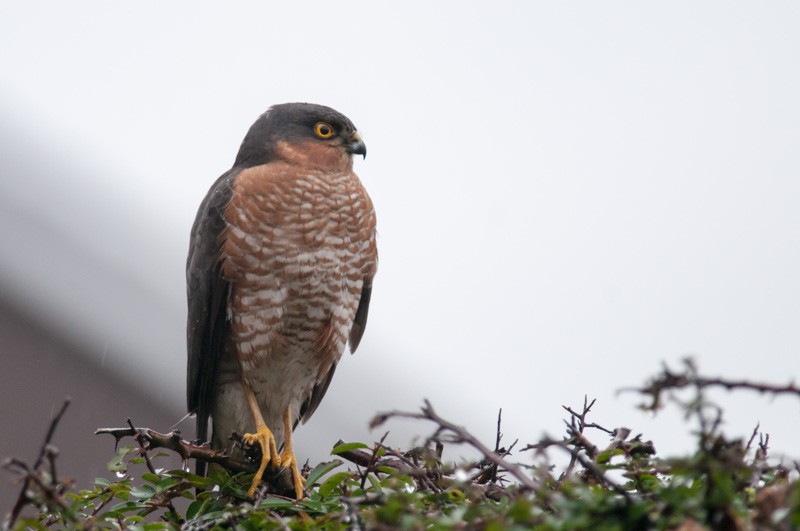Eurasian Sparrowhawk
A species of Bird Hawks, Also known as Northern Sparrowhawk Scientific name : Accipiter nisus Genus : Bird Hawks
Eurasian Sparrowhawk, A species of Bird Hawks
Also known as:
Northern Sparrowhawk
Botanical name: Accipiter nisus
Genus: Bird Hawks
Content
Description People often ask General Info
 Photo By yves hoebeke , used under CC-BY-SA-2.0 /Cropped and compressed from original
Photo By yves hoebeke , used under CC-BY-SA-2.0 /Cropped and compressed from original Description
Eurasian Sparrowhawk is a small bird of prey known for its agility and speed. It is a skilled hunter, preying on small birds. It is often found in woodlands, gardens, and parks. It is very territorial and will fiercely defend its nesting area. It is also known to be quite vocal, making a variety of calls, including a loud, sharp "kak-kak-kak" during the breeding season. 
Size
38 cm
Life Expectancy
16 years
Nest Placement
Tree
Feeding Habits
Eurasian Sparrowhawk primarily preys on over 120 bird species, typically hunting adults or fledglings, with a 10% success rate. Occasionally, it consumes chicks, carrion, small mammals like bats, and rarely insects. Specialization in prey types is noted among individuals.
Habitat
The eurasian Sparrowhawk is an adaptable bird residing predominantly in temperate Eurasian woodlands. These include deciduous, coniferous, and mixed forests, particularly favoring forest edges for nesting while utilizing open spaces for hunting. In urban areas, they inhabit parks and gardens. Their altitude range extends from sea level to mountainous areas up to 4500 meters, with winter habitats sometimes consisting of less wooded areas.
Dite type
Carnivorous
People often ask
General Info
Feeding Habits
Bird food type
Distribution Area
It is one of the most common birds of prey in Europe, along with the common kestrel and common buzzard. The Norwegian and Albanian populations are declining and, in many parts of Europe, Eurasian sparrowhawks are still shot. Eurasian sparrowhawks from colder regions of northern Europe and Asia migrate south for the winter, some to north Africa (some as far as equatorial east Africa) and India; members of the southern populations are resident or disperse. 
Species Status
Not globally threatened.